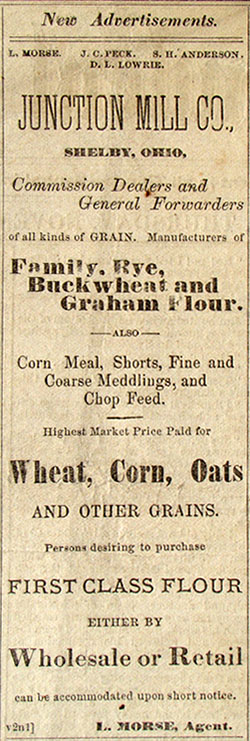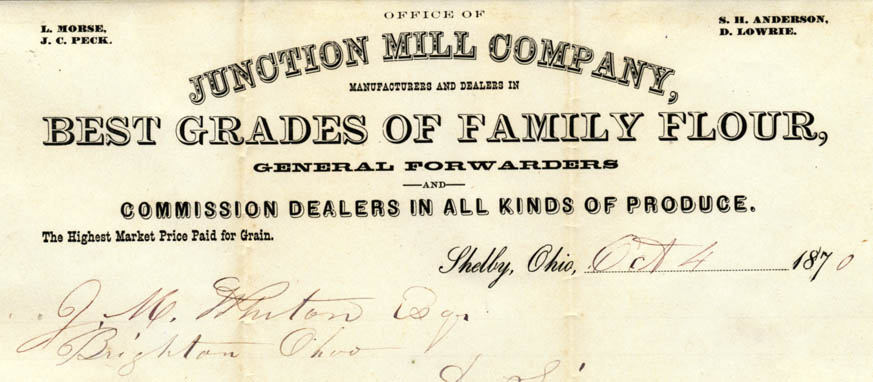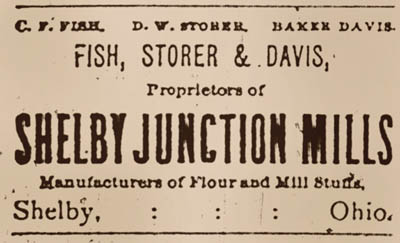
 |
"Junction Mills- We last week visited the Junction Mills, recently erected by the Junction Mill Co., composed of Messrs. Morse, Peck, Anderson & Lowrie, the latter formerly of the Center Mills. We confess we were not prepared to see so extensive an institution in Shelby, and were highly pleased with the facilities they have for manufacturing flour. The main building is 40 by 60 feet - four stories high - with a rear building about the same size, but not so high. Their power is obtained from two engines of over one hundred horsepower each. They have five run of burrs - three bolting chests, with nine reels. Have a Bran Duster, Separator and Smut Machines below, with all the latest improvements for manufacturing first-class flour. We incidently learned, since our visit, by a gentleman, who recently visited Cleveland, that their flour is much sought after there, and in great demand. They have the capacity for making two hundred barrels per day - though for want of material, and for other reasons, are now running only about one hundred and twenty-five. They have just finished a very beautiful office, having its entrance from the North side, sixteen by thirty feet, with a Bank counter, a magnificent stove, and a safe on the way, costing eight hundred dollars. The mill is run day and night. Jacob Free, Jr. and Horatio Swan, are the engineers - each of whom are on duty, six hours at a time. Our friend David Wherry is, we judge, the boss miller. Mr. Greenleaf book keeper, Mr. Morse the business manager, while the other members of the firm all have plenty of duties to perform, to keep the institution running. They are now purchasing all the wheat they can, either from wagons, or other sources, and manufacture to sell at wholesale, all kinds of flour, meal, and feed. They make almost daily shipments to Cleveland, New York, and other eastern points. Too much praise cannot be awarded the proprietors for the energy with which they have prosecuted the work to a final completion and success, and they may well be awarded the thanks of all who have the prosperity of Shelby in view. While they aim at not interfering with any of the established enterprises of Shelby, they are very much enlarging the borders of Shelby business and are giving a new impetus to our trade, such as the establishment of no other institution in Shelby, has given for some years." |
 |
 |


Copyright © 2009 - 2018